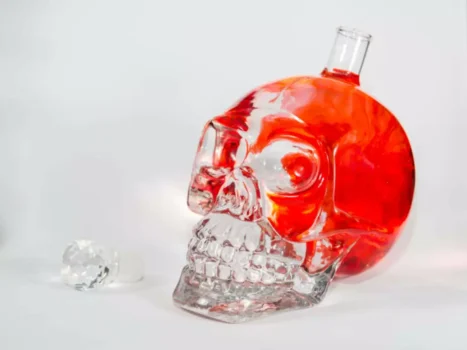
Ongoing treatment in an intensive care unit might be necessary, depending on the condition’s severity. Patients often need hydration, potassium repletion and dextrose injections to stimulate insulin production. Every patient is different, and careful monitoring is essential during the treatment process. Patients with AKA are typically hospitalized to receive close monitoring and appropriate medical interventions. Intravenous fluids are administered to correct dehydration and restore electrolyte levels.

How do doctors treat alcoholic ketoacidosis?
Alcohol withdrawal, in combination with nausea and vomiting, makes most patients agitated. However, if an AKA patient is lethargic or comatose, an alternative alcohol ketosis dangerous cause should be sought. Your prognosis will be impacted by the severity of your alcohol use and whether or not you have liver disease.
Identifying Physical Signs of Alcoholism:
If you or someone you know exhibits these symptoms after alcohol consumption, it is crucial to seek immediate medical attention to prevent complications and ensure proper treatment. If you have fruity breath along with more serious symptoms like excessive thirst, vomiting, or change in alertness, seek immediate medical attention, especially if you have diabetes. This can be a sign of DKA or HHS, both of which can lead to serious complications (including death) if left untreated. Free fatty acids are either oxidized to CO2 or ketone bodies (acetoacetate, hydroxybutyrate, and acetone), or they are esterified to triacylglycerol and phospholipid.

Alcoholic Ketoacidosis: Signs, Symptoms, and Treatment
Typically, an alcohol binge leads to vomiting and the cessation of alcohol or food intake for ≥ 24 hours. During this period of starvation, vomiting continues and abdominal pain develops, leading the patient to seek medical attention. In addition, AKA is often precipitated by another medical illness such as infection or pancreatitis. Finally, while treating the acute symptoms of alcoholic ketoacidosis is important, addressing the root cause – long-term alcohol use – is equally essential. We understand the challenges you or a loved one might face, and we recommend seeking professional help and support.
Meetings are widely available at little-to-no cost in most communities. Support groups can be a valuable source of support and can be combined with medication and therapy. For men, heavy drinking is typically defined as consuming 15 drinks or more per week. For women, heavy drinking is typically defined as consuming 8 drinks or more per week. With experiential-specific phobias, someone fears something because of a traumatic experience.

The toxicokinetics that are pertinent to the diagnosis of AKA include the rate of alcohol oxidation in the body. Ethyl alcohol oxidizes at a rate of 20 to 25 mg/dL per hour in most individuals. The accompanying lack of alcohol in the patient’s body and the fact that for some time, the only source of calories that a patient has is ethanol both contribute to the clinical syndrome that we see.
What does 3 weeks without alcohol do to your body?
Breath that has a fruity or acetone-like scent may be a sign of ketosis from your diet, DKA, HHS, excessive alcohol use, or liver disease. If you have diabetes, managing your blood sugars and taking your medications as prescribed can help reduce your risk of fruity breath. If you have diabetes and are having a hard time dosing your insulin and managing your blood sugar, contact your provider. If you suspect you are experiencing DKA, do not try to treat it at home unless under a healthcare provider’s supervision. It’s best to get to the emergency room since it is treated with insulin and fluids usually through an IV in the hospital. If you have diabetes and have glucose testing supplies on hand, check your blood sugar.
- Our expertise and experience in addiction treatment can provide the support needed to address this complex health issue.
- When this happens, it can cause ketones, which are acids, to build up in your blood.
- Joining a local chapter of Alcoholics Anonymous may provide you with the support you need to cope.
- At Sabino Recovery, we understand the challenges you or a loved one might face in dealing with alcoholic ketoacidosis.
Alcoholic Ketoacidosis Smell: Uncovering Causes and Solutions for Recovery

If you were to ignore your symptoms, though, you could end up with a life-threatening condition like a heart attack, seizure, Wernicke encephalopathy, or a differential diagnosis. Your body typically produces ketone bodies when breaking down fat for energy, but their levels can rise significantly if you consume a lot of alcohol and don’t eat enough. (2) This can rapidly lead to AKA, which may manifest even after a single binge-drinking episode, especially if you abstain from eating for an extended period. When the breath of a person with diabetes smells like acetone, they should check their blood sugar levels.

